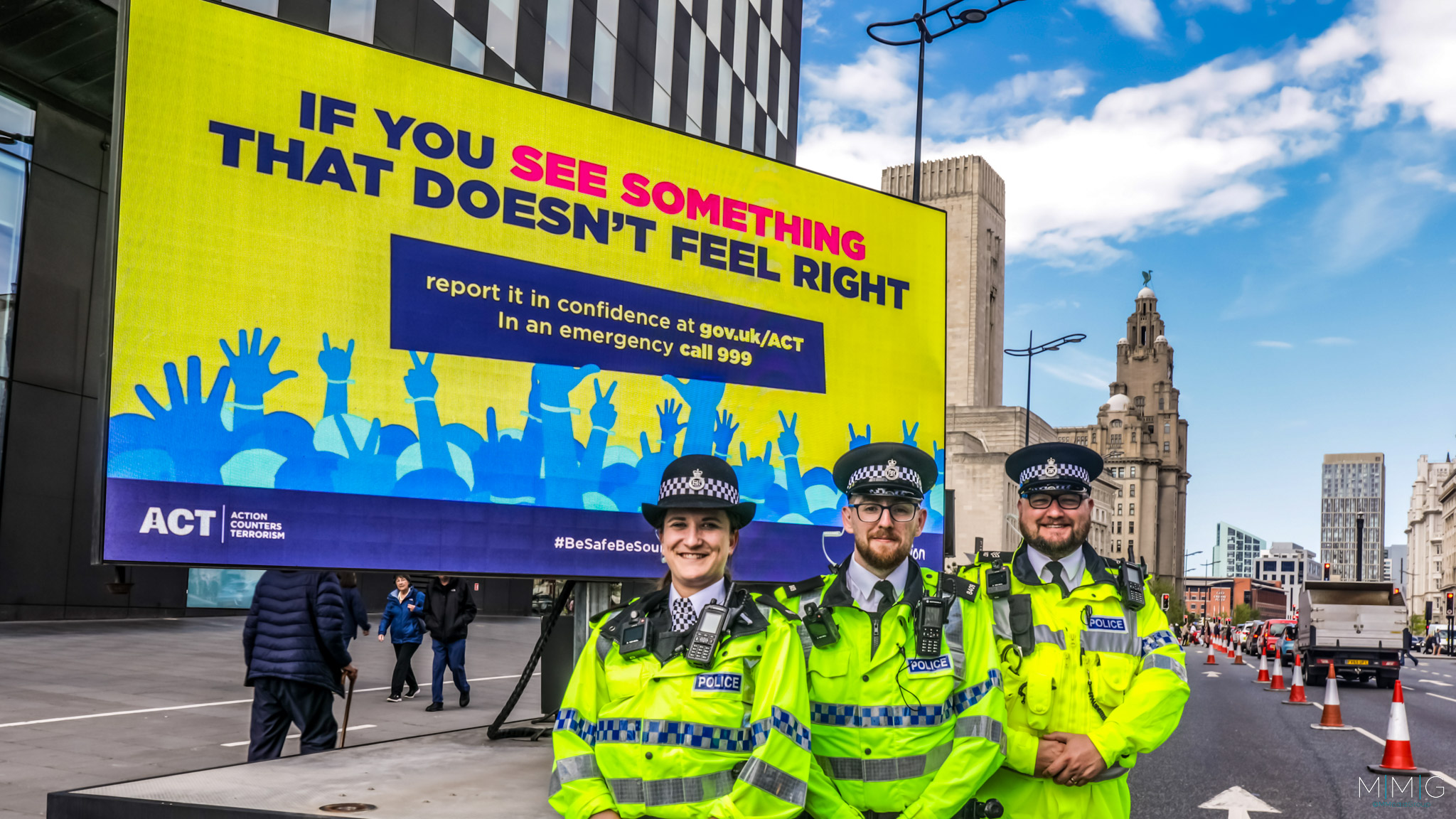Your business plays a vital role in encouraging vigilance amongst your customers and by doing so, could prevent hostile reconnaissance and terrorist incidents. Here are 4 quick and simple ways to reassure your customers through protective security communications.
1. Clearly communicate your reporting procedures
Research focused on the rail environment has indicated that members of the public are inclined to report suspicious activity to transport staff and nearby businesses, not just the police1. Findings also suggest that vigilance messaging can reassure visitors that their concerns will be taken seriously, making them more likely to report them2. Voicing your procedures and taking reports seriously can create a trusted environment where customers feel confident enough to confide in staff. In turn, this enables you to maintain a good awareness of the activities in and around your premises and manage them accordingly.
2. Use protective security to enhance customer experience
Knowing how to report suspicious activity is associated with visitors feeling safer whilst onsite3. Polling conducted by Counter Terrorism Policing found that exposure to security campaign animations at venues and events can trigger positive responses amongst participants, who believed it would make them more vigilant, reassured and willing to report concerns. In addition, research commissioned by the National Counter Terrorism Security Office (NaCTSO) to investigate the unintended consequences of public-facing security products and campaigns found no evidence to suggest increased fear or desensitisation as a result of the counter terrorism messaging4.
3. Take advantage of free security campaigns
Actionable security campaigns and materials can be used to build visitors’ knowledge of the correct response to an incident in or around your site. Exposure to Run Hide Tell guidance, for example, was found to significantly increase intentions to adopt safe security behaviours and decreased potentially unsafe behaviours in the face of an attack, without making participants believe they were more at risk5. This finding suggests that it is possible to spread awareness within the public by promoting suitable response actions, potentially lessening impact of an attack in the unlikely event one should occur near your premises.
The Digital Toolkits section of ProtectUK contains free vigilance materials, such as printable posters, social media content and web content.

4. Show potential hostiles that you’re prepared
As well as signalling to customers that you value their security and safety whilst on your premises, speaking about protective security can also deter hostile actors who may seek information about your site in order to plan an attack. Promoting your protective security measures to all visitors onsite or online as part of a Security Minded Communications approach can convey to hostiles that their reconnaissance or attack will be unsuccessful. Are you conducting bag checks upon arrival? If so, promote it! Not only is it helpful for customers to know about ahead of time, but it also sends a warning to anyone who might be looking to bring a prohibited item inside. The National Protective Security Authority (NPSA, formerly CPNI) has produced Security Minded Communications guidance.
To learn more about how to communicate protective security, visit the Communications page of ProtectUK.
1. Copeland, S., & Marsden, S. (2020). Behavioural-Focused Protective Security Programmes. The Centre for Research and Evidence on Security Threats.
2. Ibid.
3. Ibid.
4. Unintended Consequences Research: Identifying the Impact of NaCTSO Public-Facing Products and Campaigns. (journal publication upcoming)
5. Pearce, J., Lindekilde, L., Parker, D., & Rogers, B. (2019). Communicating with the Public About Marauding Terrorist Firearms Attacks: Results from a Survey Experiment on Factors Influencing Intention to "Run, Hide, Tell" in the United Kingdom and Denmark, Risk Analysis, doi: https://doi.org/10.1016/j.ijdrr.2021.102278

